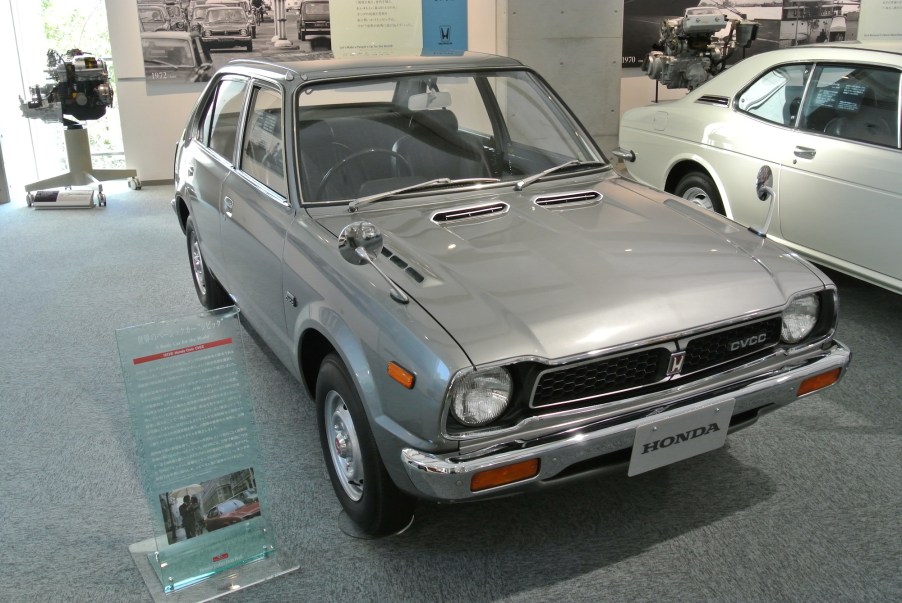
When Was the First Honda Civic Built?
When it comes to affordable, reliable, and fuel-efficient cars, the Honda Civic is likely the first car to come to mind. And while Honda does have a long and storied past, the Civic played a major role, not only by making a large splash in the compact car market but also in cementing Honda’s name in the history of the automotive world. There have been many small cars since the Civic first appeared, but none of them have the same feeling and engineering that the Civic has ever had. But that made us wonder, when was the first Honda Civic built?
The Honda Civic dates back to almost 50 years ago
The Honda Civic is currently in its tenth generation and it amazes us to think that the first one was built almost 50 years ago. That’s right, the first Honda Civic appeared in 1973, which was perfect timing considering America was going through a gas shortage that drove up gas prices and has consumers looking for small, fuel-efficient cars. Honda answered the call, providing the Civic as an affordable means of transport in three different flavors: a coupe, a hatchback, and a station wagon.
The first-generation Civic featured front-bucket seats, an AM/FM radio, power disc brakes, and a small 1169cc engine that was mated to either a 4-speed manual transmission or a 2-speed “Hondamatic” transmission. As you can imagine, the car was tiny. Car and Driver reviewed it back then and noted that it was 139.8 inches in length, weighed 1,536 pounds, and rode on 12-inch wheels and tires. They also noted that the 1973 Civic was so small that its maneuverability would only be beaten by a motorcycle and that wind gusts made it “cringe noticeably,” not due to bad engineering, but mainly because it was so small.

The Honda Civic evolved during that time
The first-generation Honda Civic was in production until 1979, which goes to show that it placed the major foothold that the brand was looking for. During that time, Honda increased the engine power to a total of 52 in 1974, and in 1975, it introduced the CVCC (Compound Vortex Controlled Combustion) engine that featured a specially designed cylinder head to and fuel delivery design for cleaner emissions. With this invention, we can see why it easily topped the Environmental Protection Agency’s list of most fuel-efficient cars in 1977. According to Car and Driver, Honda Civic sales topped 100,000 units by that time.
By the end of the decade, in 1978, Honda decided to spruce up the Civic’s aesthetics by adding some hood vents, a blacked-out front grille, as well as some added turn signals. By that time, the Civic’s power output was increased to 55 horsepower and the CVCC engine was now putting out 63 hp. With a fuel economy rating of around 48 mpg at the time, the Honda Civic effectively fulfilled the public’s need for a fuel-efficient and reliable compact car.

The rest is history
By the time the second-generation Honda Civic debuted in 1980, the brand had already become a household name. In the decades that followed, the Civic ended up growing in size and popularity to become the staple in the automotive world that it is today. It’s interesting to think that one car could reshape the automotive landscape, but it just so happened that appeared in the right place and at the right time.



